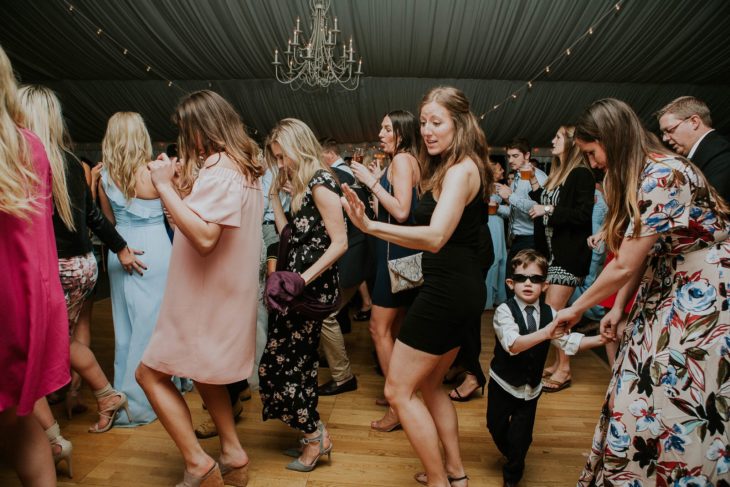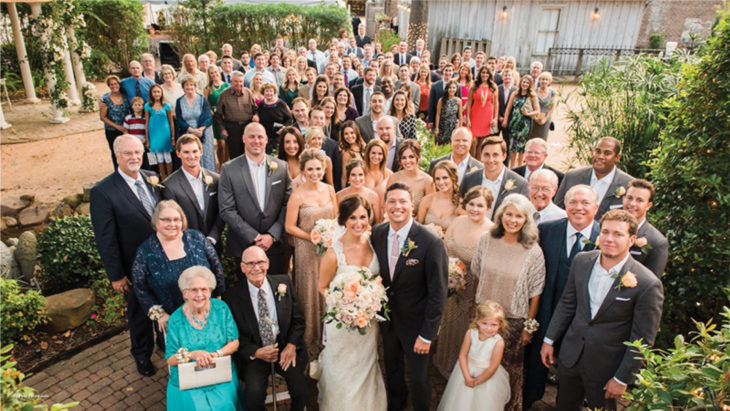Once upon a time, everyone’s wedding invitations were proper on heavy white or ecru paper stock engraved or embossed in a style formalized by years of custom. No doubt they were elegant, and still are, if that’s your style. Tradition is a lovely thing, and if you’d like more information about classic invitations, click here.
But today’s couples have all the freedom in the world to color outside of that traditional box in the whole suite of wedding stationery from saving the date cards to thank you notes. You can turn things upside down and rather than black on white, your invitations can be white on black, for example. Or read on pink, gold on deep purple, whatever combination you fancy whether pale and delicate or bold and bright. You can also include designs, photographs, and other graphic elements that carry out your theme.
You want your invitation to establish a sense of occasion and mood but most important is making sure you include all the relevant information so people know who, where, when, and what kind of dress is appropriate. On that latter score, there are established conventions as to what the words black tie, formal, semi-formal, and so on mean. If you’re going to use a quirky dress code like Bohemian Chic or Uptown Casual, check with some friends and older relatives first to make sure people are going to know what you mean.

Source: fastcompany
Planning and choosing your invitations is part of the fun of preparing for the big day. But making up your guest list and deciding who will actually receive those invitations can be a knottier issue. In some cultures, the entire village is invited to weddings, but your list will probably need to be somewhat smaller. Here are some questions to ask that will help you define it:
Contents
Are They Family?
First to be considered are family members from both sides. These are the folks who have known you all or most of your life and who love you without condition. They’re happy for you and looking forward to knowing the person you’re marrying and the family you’re marrying into. Who wouldn’t want to be surrounded by all that good feeling on one of the most important days of their lives?
If you’ve both got large families, they alone might make up most of the list, but how far out you want to extend the group is up to you. In-laws of in-laws? Second cousins? If you’re close to them, include them. If not, it’s not likely they’d expect to be invited anyway. Just don’t send invitations to relatives who live far across the country because you think they won’t come. They might!

Source: stonebridgemanor
Are They Friends?
Real friends and not just acquaintances? Then it’s a no-brainer. If you’re not sure, then ask yourself whether they’ve spent time with the two of you or if in the normal course of events you’d invite them over for dinner. If not, then you can pass.
How about friends of your parents? Some may be as close to you as relatives and surely belong on the list. But your mum’s business partner or your dad’s golfing chums? That will require an honest conversation with your folks, especially if they’re paying for the wedding. In a perfect world, you could invite everyone who’s important in their lives as well as in yours. But it’s your wedding.
Are They Co-Workers?
If you hang out outside of work, then they belong in the friend category. If your relationship is limited to the office, though, then leave it there. Just be careful about the wedding talk at work. The more you involve people in discussions about your planning, they more they’ll expect to be invited.

Source: kerridgeweddings
Are They Plus-Ones Or Children?
Engaged couples or those in long-term relationships should be treated like married couples and both partners should be invited. And if the choice is to let other single friends bring dates or to invite more people you know casually, invite the dates. Your single friends will be happier, and the others won’t ever know they might have been on the list.
As for children, if you set an age limit to be careful to apply it equally across the board. Ring bearers and flower girls are exceptions, but if you start playing favorites beyond that, you’re going to have some very miffed guests. People manage to go to all sorts of places without their children, so babysitting shouldn’t be your problem. But if you want to, and can afford it, you might hire someone to watch young guests in another room or at a nearby relative’s home.
Are They In Another Category?
If you can’t imagine your big day without them, then end of discussion. It’s one of the most important events in your life and if someone will make it more fun or more meaningful for you, that person belongs to your wedding.

Source: insider
Should You Have A B-List?
Once your list reaches the capacity of your budget or of the wedding venue, there may still be people you’d like to invite. You can hold those names in abeyance and send them invitations after you receive regrets from others. The closer it gets to the wedding date, though, the more awkward that becomes. If there are people who have not responded in a reasonable time (and there surely will be) it’s not out of line for you or your maid of honor to call them to confirm yea or nay.
If you find yourself with seats to spare just a few weeks before the wedding, phone the people on the alternates list in advance of mailing the invitations. No need to twist yourself into a pretzel with explanations; people understand about budgets and family obligations. Just put a big smile on your face and tell them that you’ve managed to find additional seating and how happy you are now to be able to invite them and hope they can come to join you on the big day.
